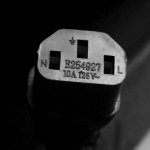It is Christmas in July
It is Christmas in July
And again the NEC ampacity tables have no more to do with this than Santa has to do with 4th of July.
First:
The OP asked for the ampacity of SJT #18 and C13.
NEC has a table of ampacities for cords.
Second:
400.7 Uses Permitted.
(A) Uses. Flexible cords and cables shall be used only for
the following:
(1) Pendants.
(2) Wiring of luminaires.
(3) Connection of portable luminaires, portable and mobile
signs, or appliances.
(4) Elevator cables.
(5) Wiring of cranes and hoists.
(6) Connection of utilization equipment to facilitate frequent
interchange.
(7) Prevention of the transmission of noise or vibration.
(8) Appliances where the fastening means and mechanical
connections are specifically designed to permit
ready removal for maintenance and repair, and the
appliance is intended or identified for flexible cord
connection.
(9) Connection of moving parts.
(10) Where specifically permitted elsewhere in this Code.
(11) Between an existing receptacle outlet and an inlet,
where the inlet provides power to an additional single
receptacle outlet. The wiring interconnecting the inlet
to the single receptacle outlet shall be a Chapter 3
wiring method. The inlet, receptacle outlet, and Chapter
3 wiring method, including the flexible cord and
fittings, shall be a listed assembly specific for this
application.
(B) Attachment Plugs. Where used as permitted in
400.7(A)(3), (A)(6), and (A)(8), each flexible cord shall be
equipped with an attachment plug and shall be energized
from a receptacle outlet or cord connector body.
Appliance is undefined in
NEC
Dictionary Definition --
appliance noun 1. a device or piece of equipment designed to perform a specific task, typically a domestic one.
Computer perform computation, a specific task.


